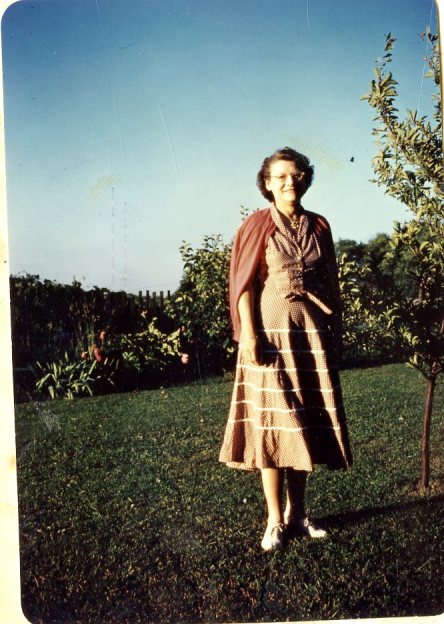As I work my way through the lower stacks, I find a lot of intriguing things. This morning, I opened a box that had been donated to the Historical Society in 1972 with instructions to keep sealed until 1978.

That’s not particularly unusual. Donors often protect the privacy of their relatives or friends by requesting that personal papers go unopened until sometime after the individual’s death. The boxes containing Main “Annie” Derr Slingluff’s diaries were probably opened in 1978, as instructed, but they were never cataloged or described.

There are twenty-seven volumes in all, from 1908 until her death in 1938. Main Derr Slingluff was born in Norristown in 1868 to Henry and Ellen Derr. She married William H. Slingluff (a future president of Montgomery National Bank) in 1892. Now, I can’t say for sure that this picture is Main D. Slingluff because it is only identified as a member of Slingluff family. However, it was donated by the same man who donated the diaries, and the style of the clothing is consistent with Mrs. Slingluff’s dates.

When something has been sealed up, we often expect there to be something scandalous or controversial. Of course, I wasn’t able to read all twenty-seven volumes of her diaries, but I didn’t see anything of the sort. I did find some very moving passages from the life of one of Norristown’s society ladies in the early 20th century.
The entries describe trips to the theater and the “movies,” bridge games, her involvement with St. John’s Church in Norristown, and drives in the family car. The Slingluff’s had two children, Eleanor (born in 1896) and Marjorie (born in 1900), and they feature prominently in the diaries. In August of 1909, both girls became ill.



Everyday in August, Mrs. Slingluff recounts her day with the children, their symptoms, and the doctors who came to the house. Then on August 30th, she wrote:

Eleanor recovered would recover from typhoid a few weeks later.
Most of the diaries are personal. I looked through the years of World War I and saw little reference to it. Likewise, I looked through October of 1929 and found no reference to the stock market crash. In 1918, however I found two entries that were interesting. At the beginning of the year she wrote:

“Grippe” is what we usually call the flu today. And it’s possible that the the flu that sent Mrs. Slingluff to bed in January of 1918 was just the run of mill flu. But, January, 1918 was the start of the “Spanish” flu epidemic that killed tens of millions. She recovered, and in November was able to record this happy entry:

Main D. Slingluff continued to live in Norristown after the death of her husband in 1930 and after her only surviving daughter moved to New York. She fell ill in the summer of 1938, and the last few entries were written by Eleanor.

Main Derr Slingluff is buried at St. John’s Cemetery in Norristown.





















